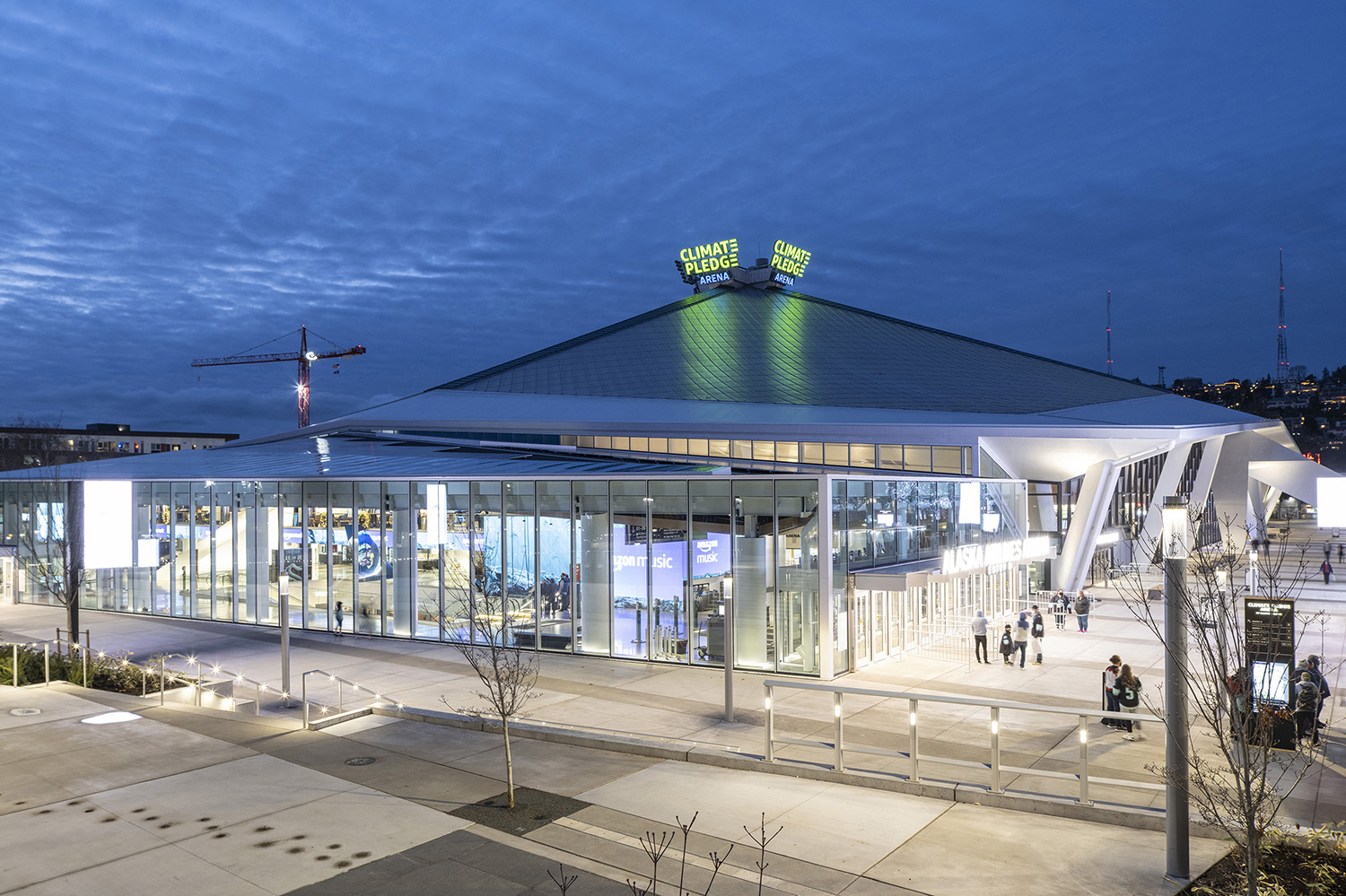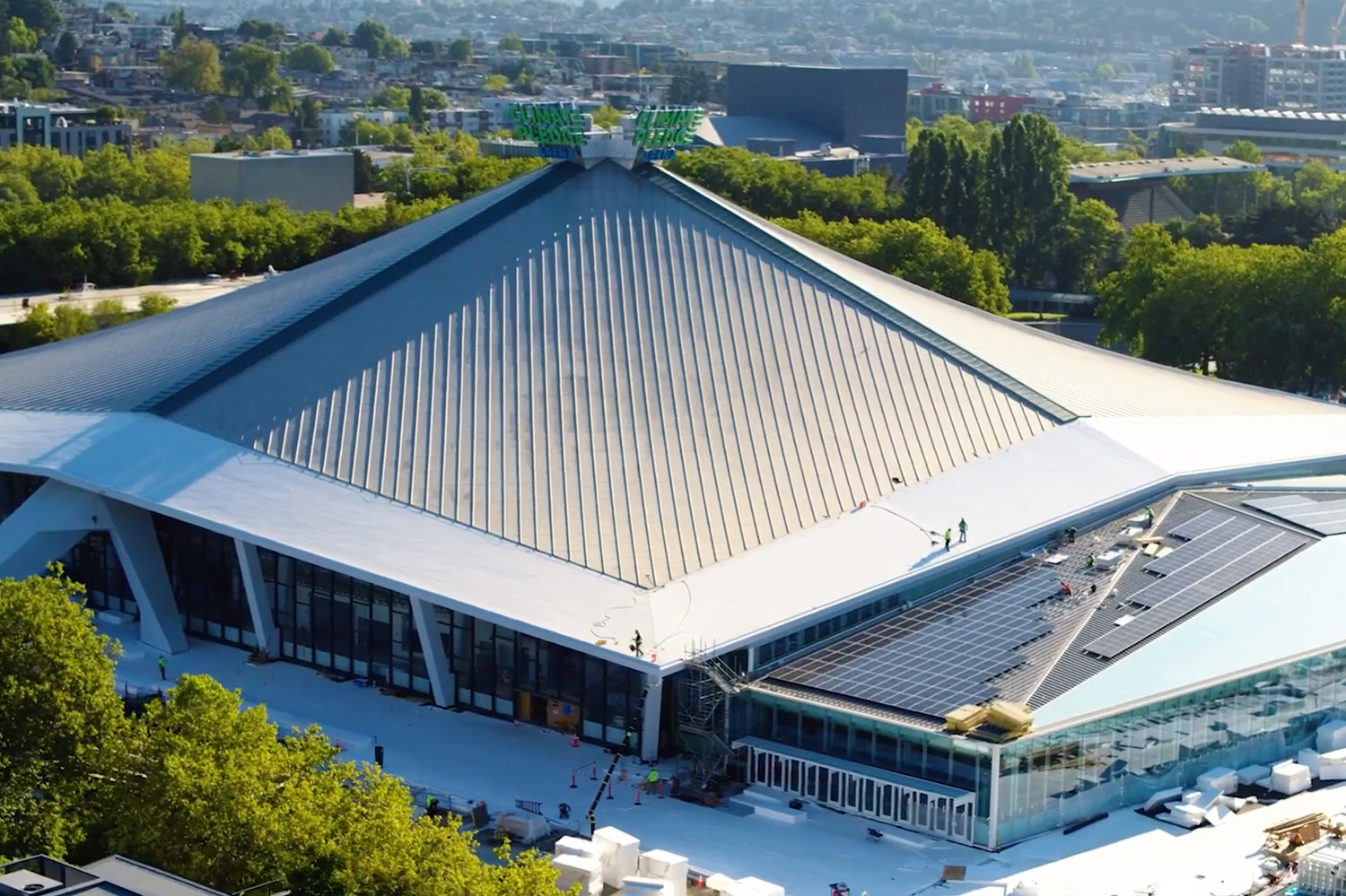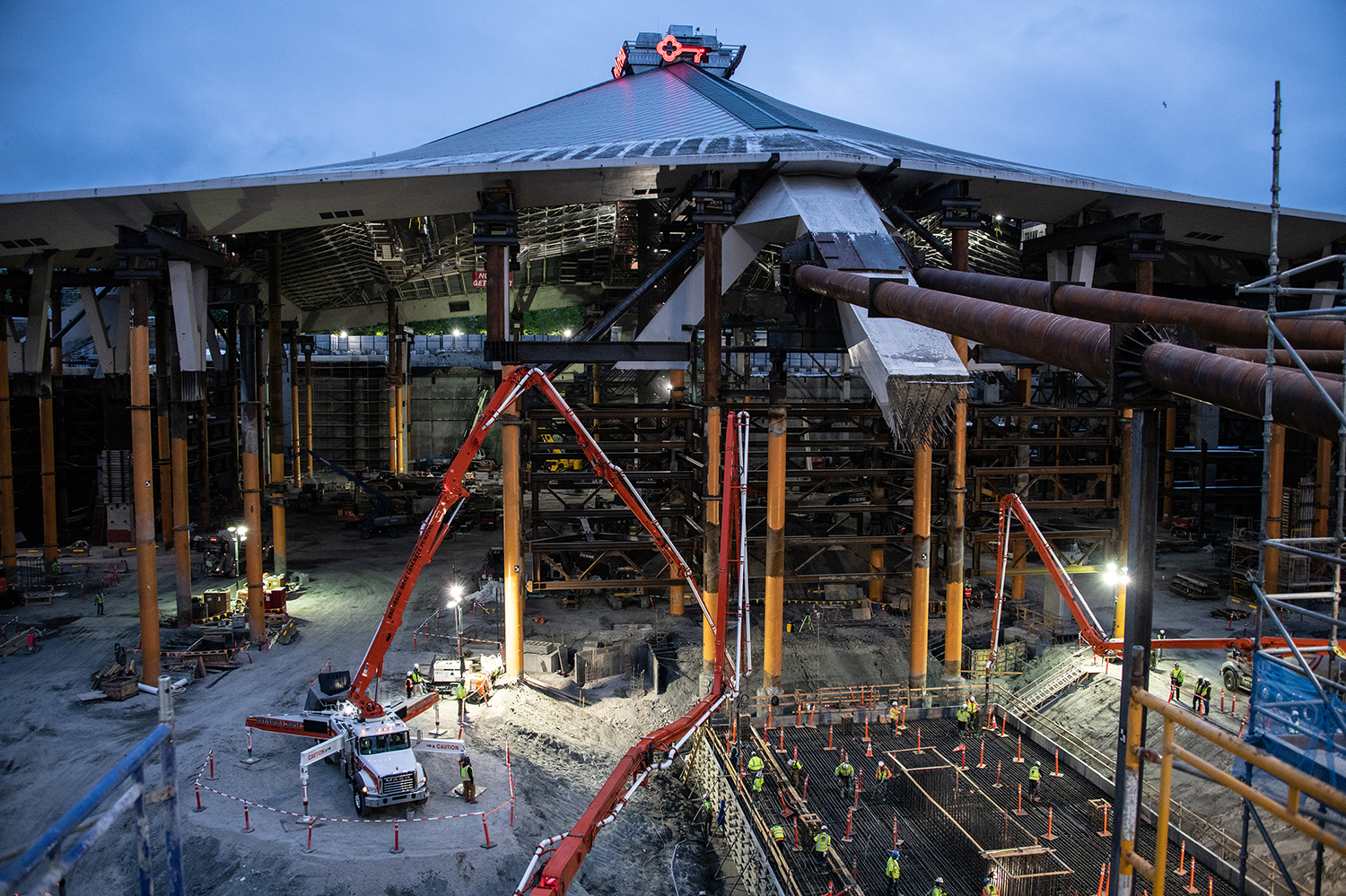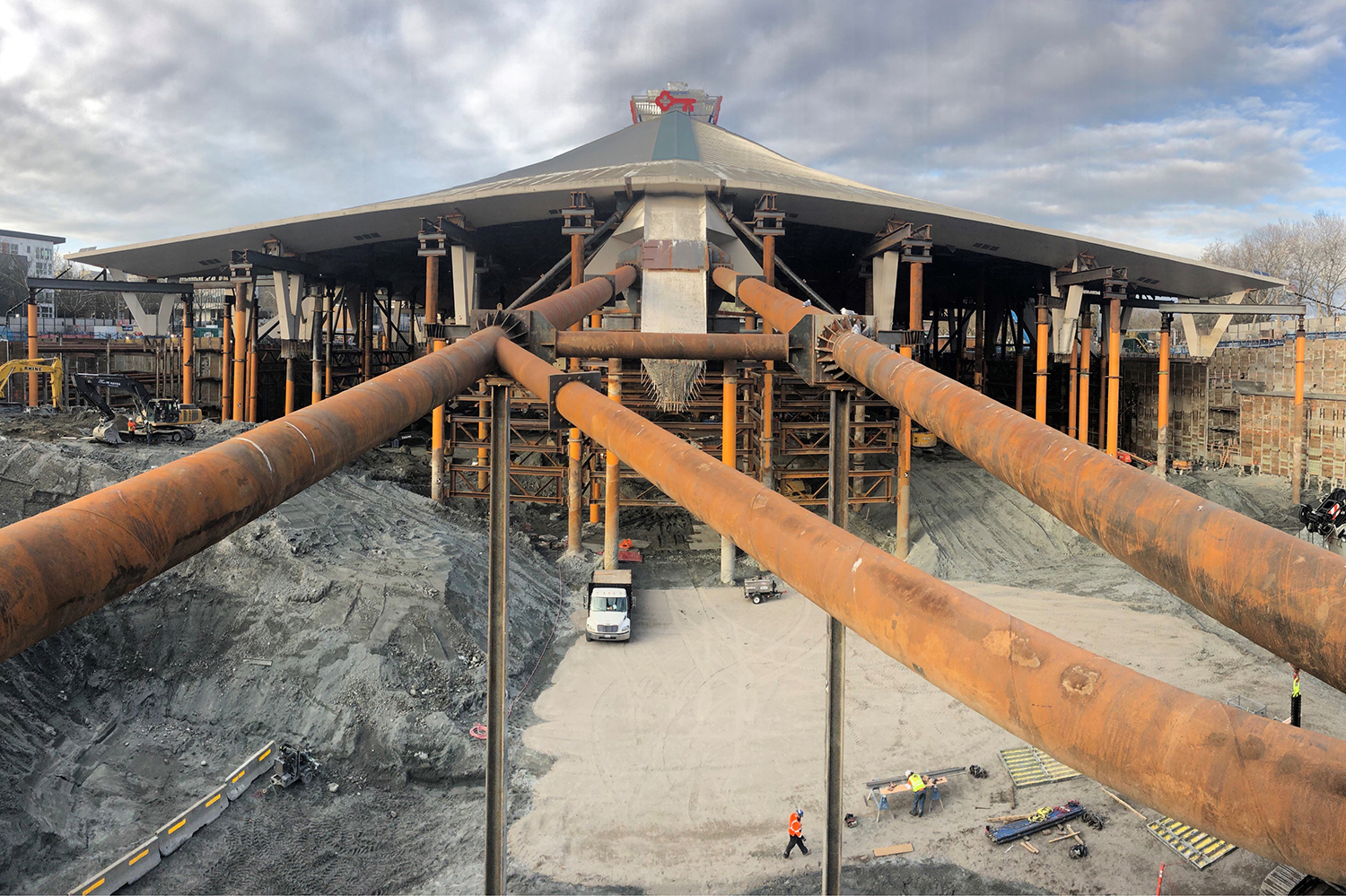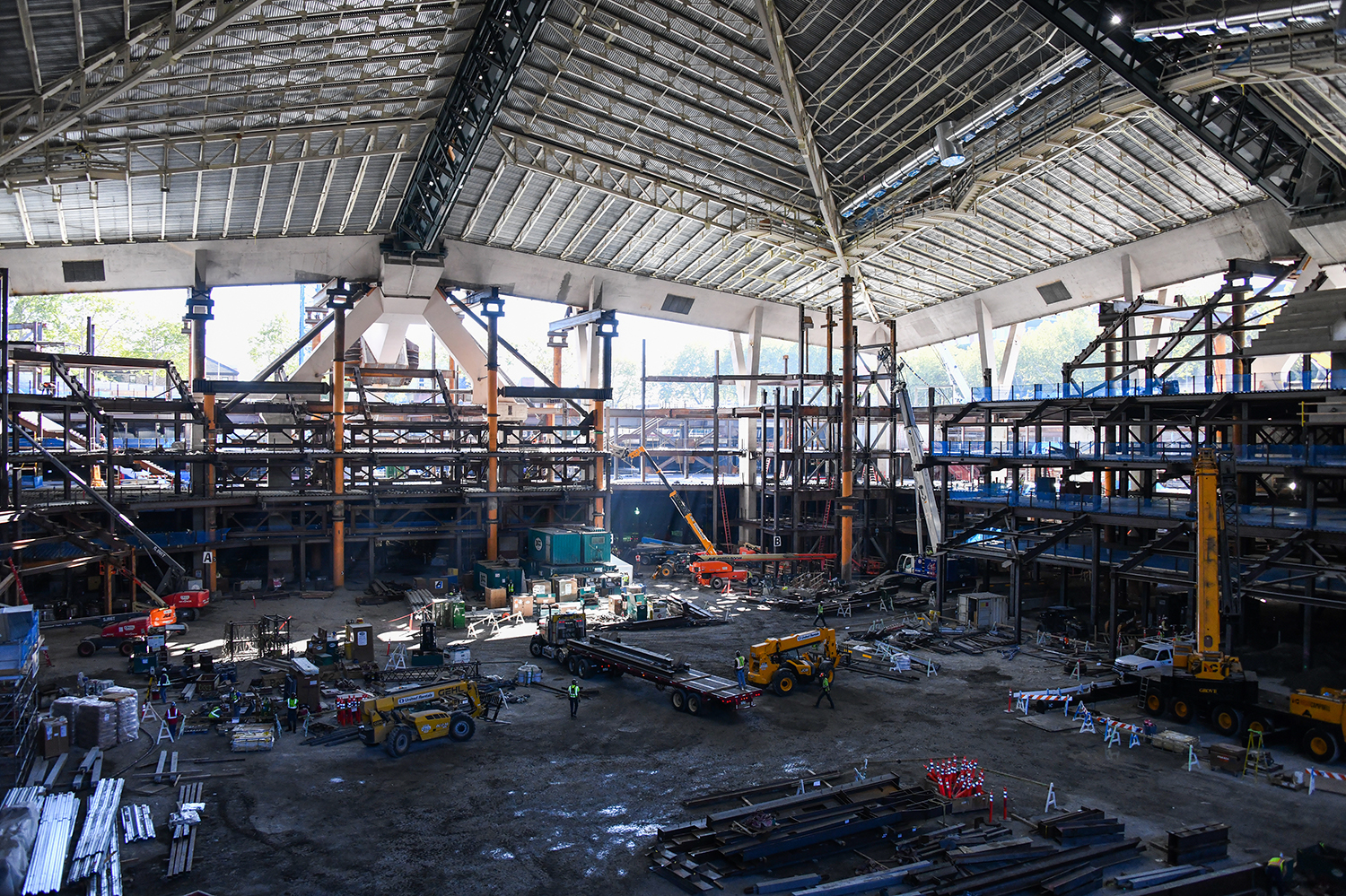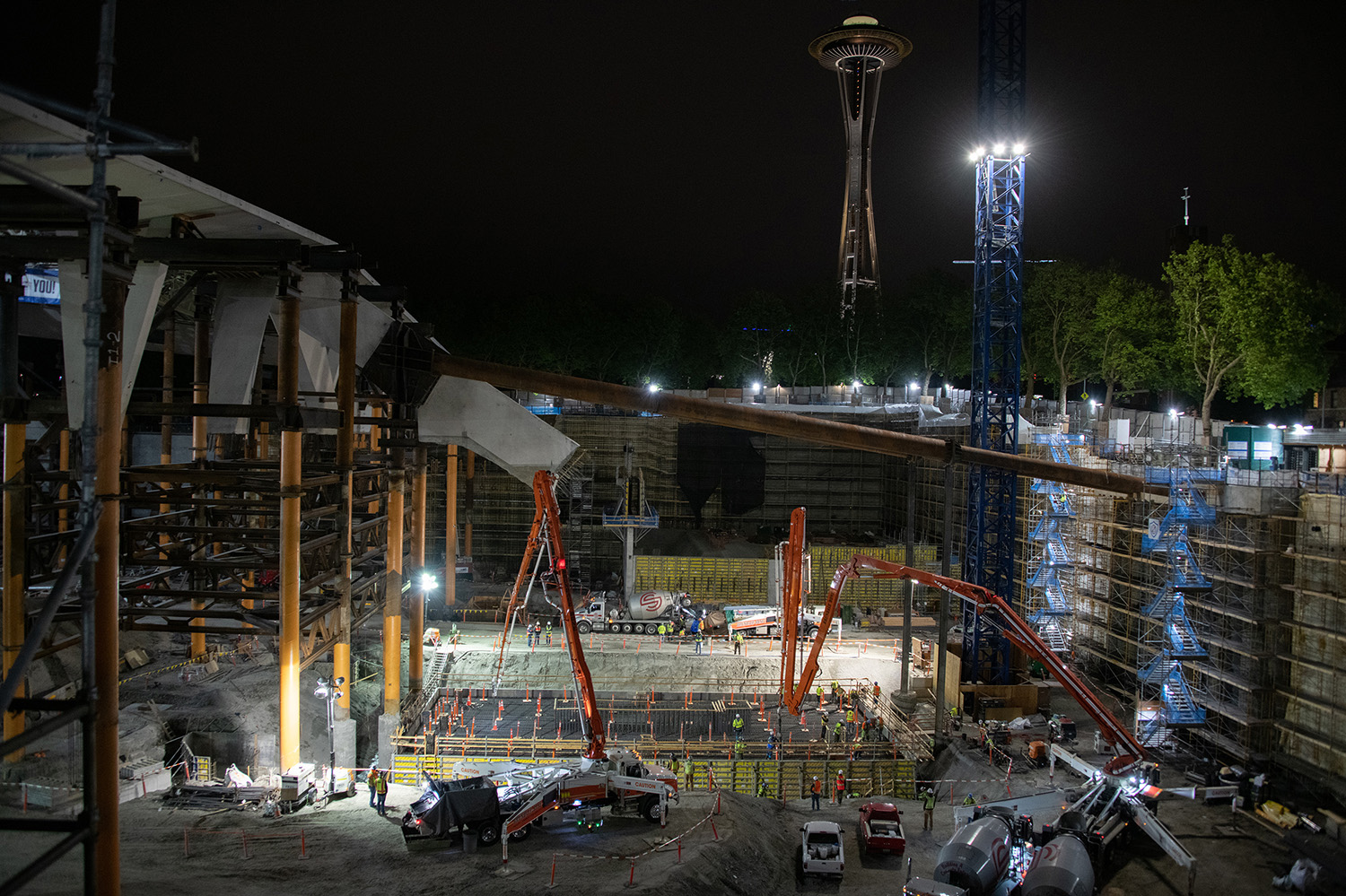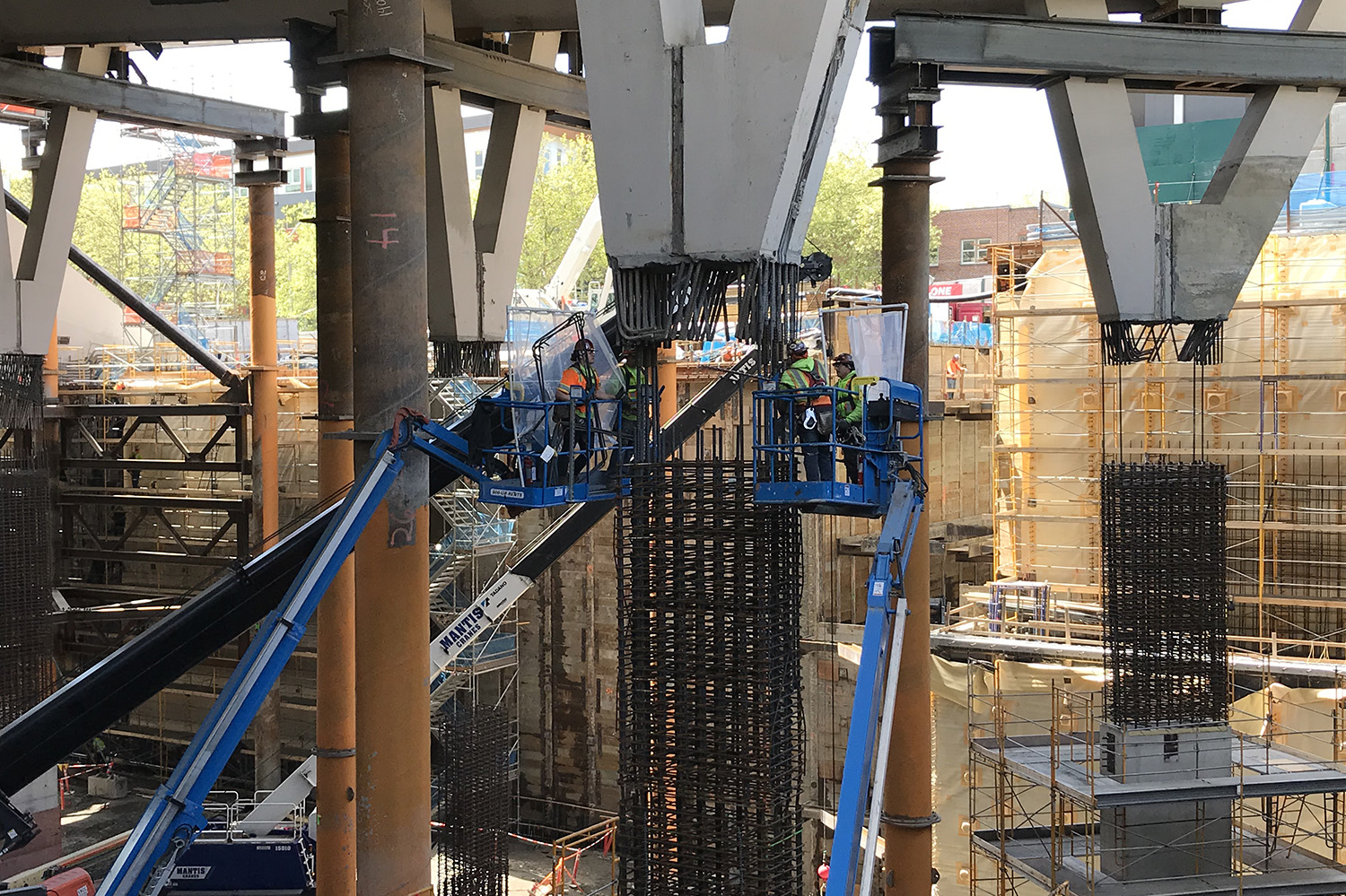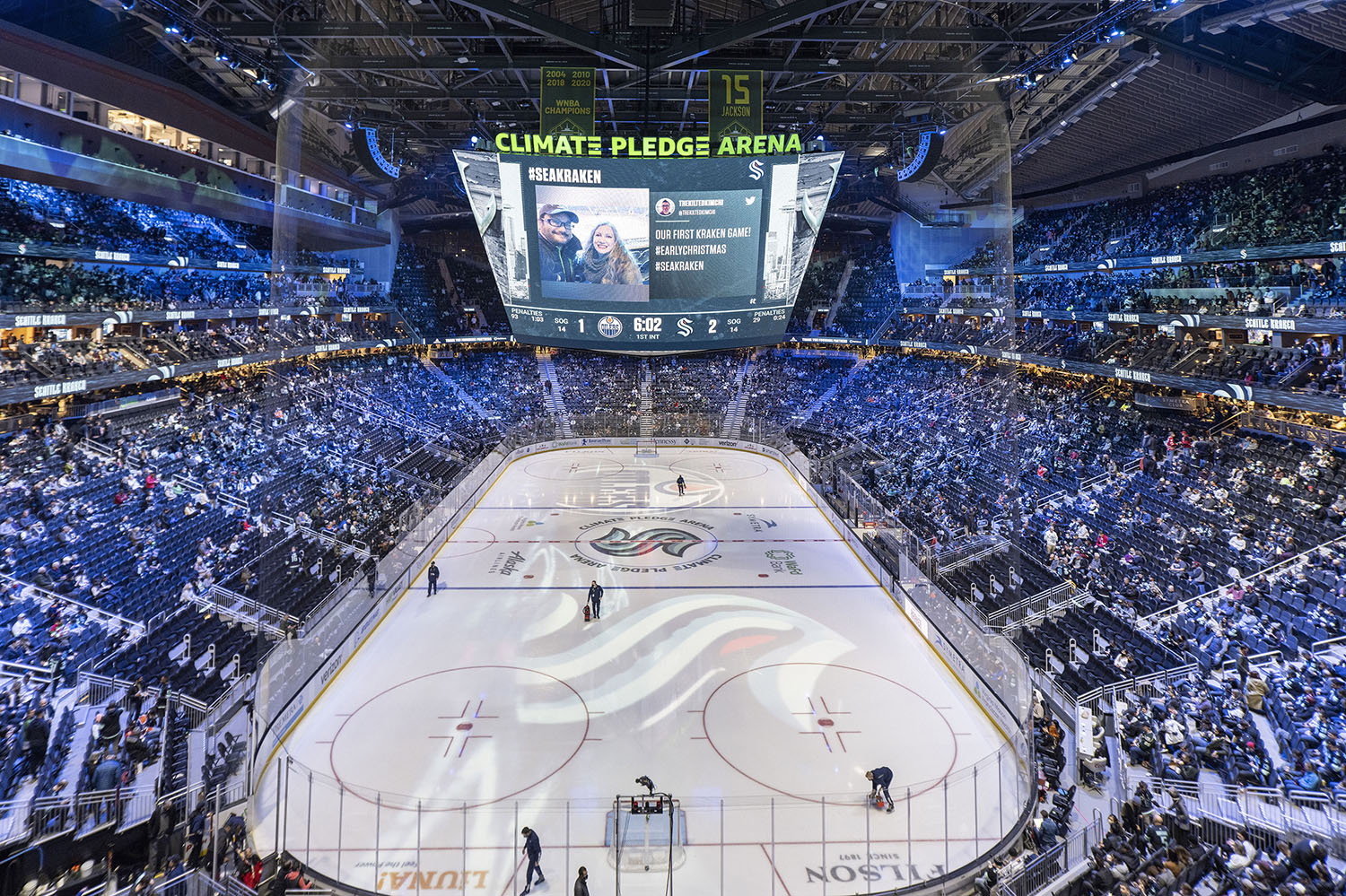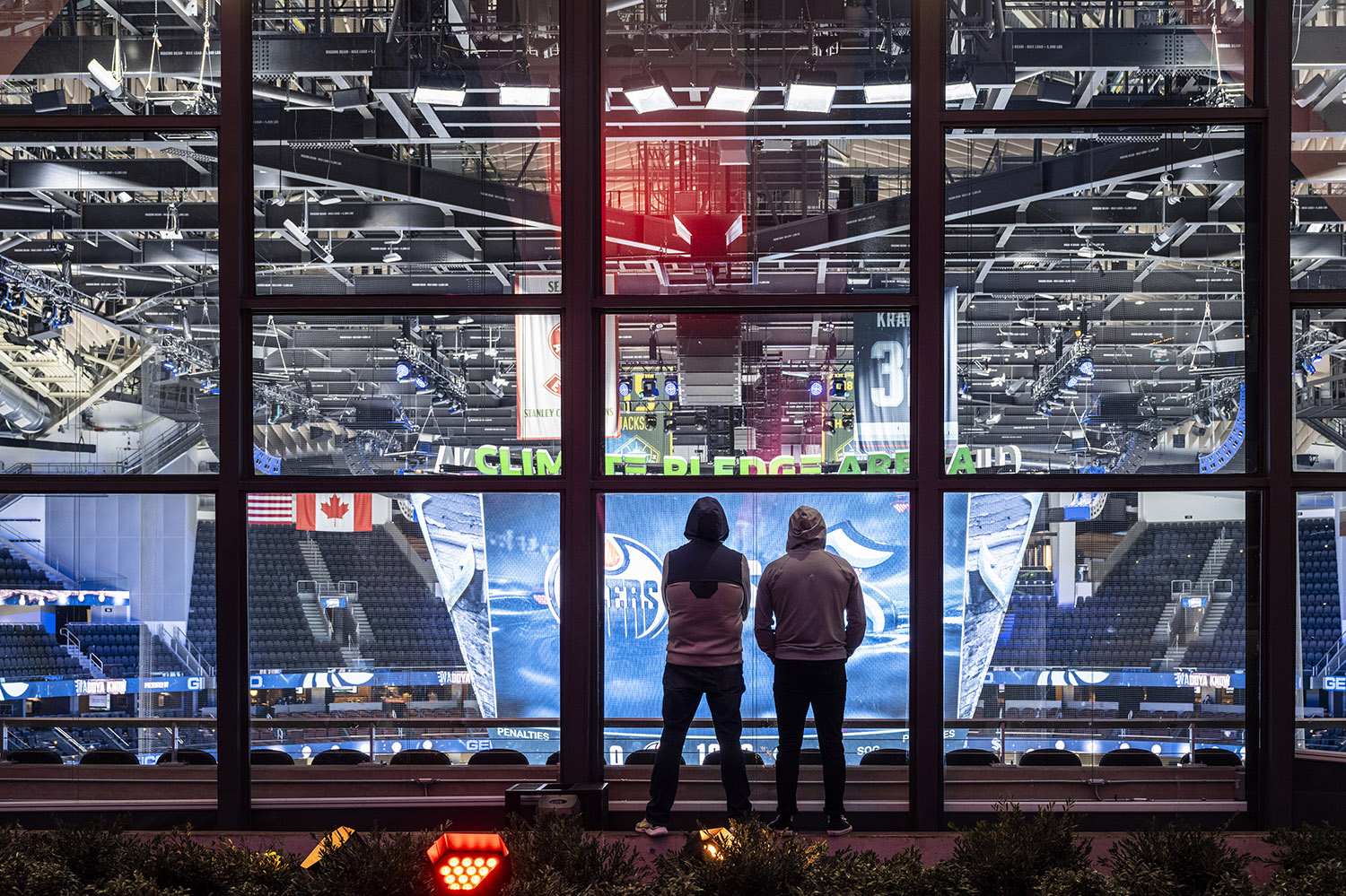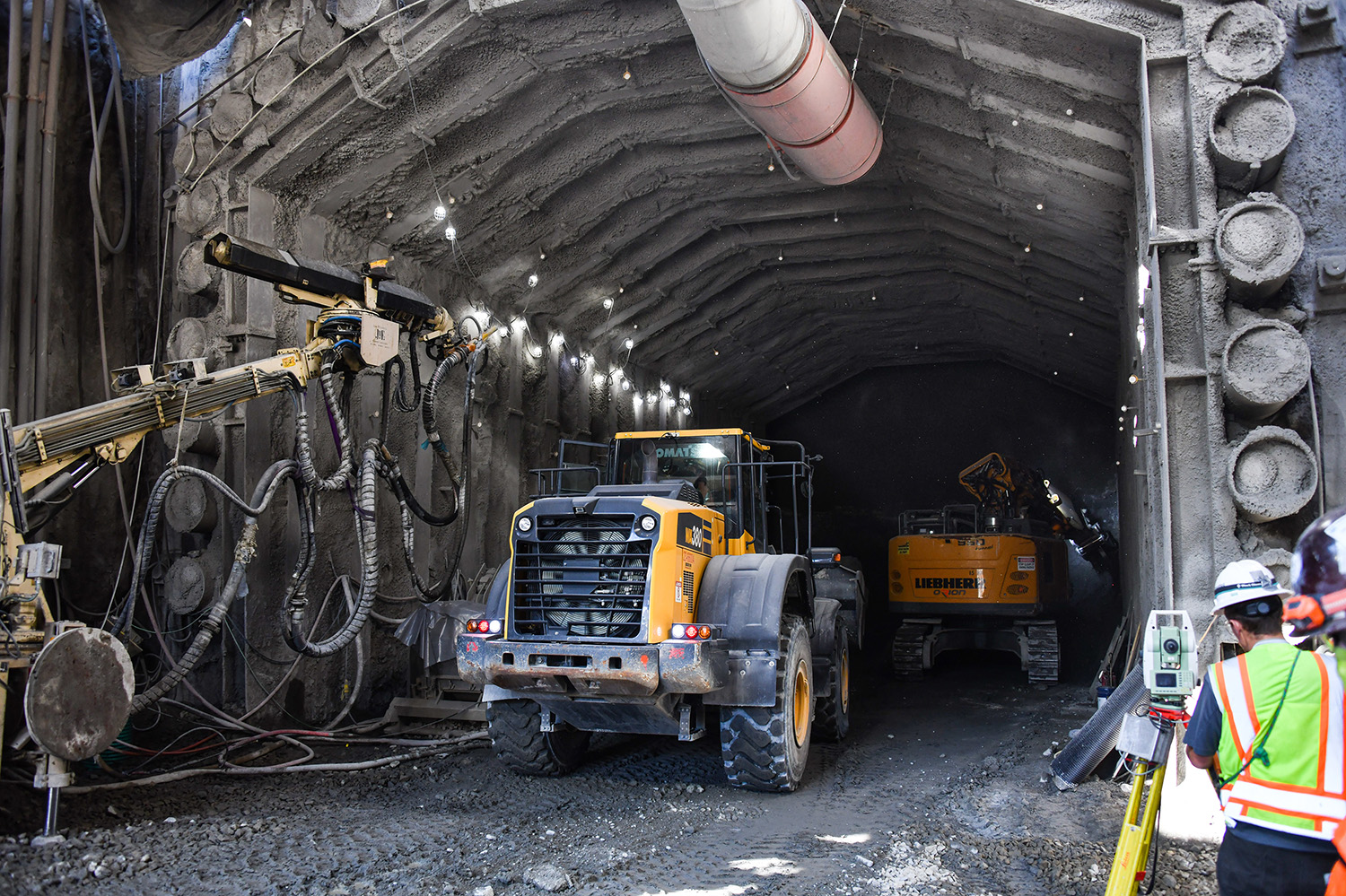AISC
Climate Pledge Arena
Merit Award - Greater than $200 million
The new home of the Seattle Kraken scores a hat trick: It involved the near-total demolition of the existing structure and construction of a largely below-grade arena while keeping the landmarked facade and iconic roof intact, it was completed to meet the NHL scheduling requirements, and it was designed to be the first net-zero certified arena in the world.
The resulting facility, Climate Pledge Arena, is a major transformation of the former KeyArena, once home to the NBA’s Seattle SuperSonics. The $930 million renovation and expansion has created an 800,000-sq.-ft, mostly below-grade venue that holds more than 17,000 fans.
The transformation required near-total demolition of the old structure and construction of a new one, all while keeping the landmarked façade intact and the 22,000-ton roof supported above. The arena is in a high-seismic zone, requiring a roof and column retrofit as well as extensive excavation and shoring to build the new facility under the existing roof. Tuned mass dampers provide vibration control for a 275-ft-long press level bridge using two trusses, a composite steel beam floor system is used throughout the structure, and steel rakers support precast concrete stadia units at seating areas. In addition, an expansive rigging grid supports more than 100 tons of loading.
From the initial phases of the project, a steel structure was the clear structural system of choice for the complicated below-grade bowl structure and the press level bridge. While the temporary roof support system was not fully designed and coordinated until the latter part of the design process, the design team envisioned an extensive temporary steel structure that would be required to be removed and disassembled after the permanent structure was in place. A temporary system using concrete was not feasible, and the temporary roof support system would also require an independent lateral system designed to resist any potential temporary seismic forces. A structural system that could be woven in and around the temporary roof support steel elements won out over a permanent concrete structure that required challenging formwork and shoring conditions. Other factors tipping the scales towards a steel structure included a reduction in self-weight to reduce the seismic forces by minimizing the weight of the floor system.
The steel and concrete structure that now covers the arena was designed by Paul Thiry in the late 1950s and constructed in 1961, and in 2017, the Seattle Landmarks Preservation Board classified Key Arena as a local landmark. This distinction required that the roof, curtain wall, and exterior concrete elements be preserved as part of the renovation with virtually zero impacts on their aesthetics. The central challenge became how to support the existing roof while work continued below it.
Since the new foundations and 55-ft-below-grade event level would undermine all of the existing roof supports, the engineering team designed a temporary system entailing 3,700 tons of temporary steel framing to uphold the majority of the roof’s gravity load and resist wind and lateral seismic forces during twenty months of construction. The historic roof had to be supported in the air during the demolition of the remaining structure without incurring damage while also allowing sufficient access and clearance to remove 680,000 cubic yards of soil and install the permanent structure around the temporary structure.
The team performed a seismic retrofit of the existing roof to ensure that it would resist the seismic demands of modern codes, using a computationally demanding performance-based design process that relied on realistic ground motions based on site-specific seismicity and accounts for the structure’s nonlinear behavior. Using these advanced analysis techniques allowed the team to significantly reduce the number of steel roof members requiring retrofitting.
The project team also employed strategically placed seismic fuses to minimize retrofits in the exposed concrete elements and preserve the aesthetics of the landmarked structure. To limit seismic demands on the existing Y-shaped columns supporting the roof, the team seismically isolated them from the upper levels of the new bowl structure using low-friction slider connections. One of the primary existing lateral bracing elements, the south buttress, was cut back above its foundation to allow for the construction of a new below-grade parking garage. The team employed selective hydro demo techniques to preserve the existing reinforcing in the buttress and supported it in the permanent condition using an 8-ft-thick shear wall on a large pile cap.
The new bowl structure lateral system consists of buckling-restrained braces (BRBs) in the elevator cores and concrete shear walls at the perimeter basement walls and strategically located at the interior. BRBs also brace a new catwalk and a 100-ton-capacity rigging grid to the existing roof structure to control the forces between the new and existing structures. In addition, tuned mass dampers control vibrations in the long-span floor system, and slide bearings between the new elevator core steel and the existing roof structure seismically isolate the roof from the new bowl structure below.
An integrated approach to solving challenges was critical to the project’s overall success. The structural engineer provided its Advanced Project Delivery (APD) services, which helped to achieve considerable schedule and cost efficiencies, and the construction engineering and structural design teams worked in parallel with the steel team to provide a fully coordinated and connected Tekla model for the 8,700 tons of permanent steel for the arena and parking garage while also producing full shop drawings for the 3,700 tons of temporary roof shoring structural steel.
For more on the Climate Pledge Arena project, see “Inside Job” in the April 2021 issue of Modern Steel Construction.
Judge comment: “The challenge on this project was taking an existing structure, trying to keep the facade and the roof in place while the interior was gutted. There was excavation and an intense amount of shoring to keep the project stable during the construction process and do that on a very short timeframe. That succeeded in large part thanks to early involvement of the structural steel contractor, moving a lot of the decision-making earlier in the timeline of the project and allowing some of the coordination issues to go away before they would have even come up: during construction. There’s a lot of value in steel and a lot of things we can brag about with steel, and this is just a case where that shines.“ -Mark Trimble, senior vice president, American Institute of Steel Construction
Owner: Oak View Group, Los Angeles
Owner’s representative: CAA ICON, Denver
General contractor: Mortenson, Kirkland, Wash.
Architect: Populous, Kansas City, Mo.
Structural engineer: Thornton Tomasetti, Inc., Kansas City, Mo.
Civil engineer: DCI Engineers, Seattle
Steel fabricators:
LeJeune Steel Company, Minneapolis *AISC full member, AISC-Certified building fabricator*
Corebrace, LLC/SME Steel Contractors, Inc., West Jordan, Utah *AISC full member, AISC-Certified building fabricator*
Erector: Danny's Construction Company, Shakopee, Minn. *AISC associate member, AISC-Certified erector*
Detailer: LTC, Inc., Onalaska, Wis. *AISC detailer*
- Project Category: Year 2023
- Location: Seattle, WA
- Submitting Firm: Thornton Tomasetti
- Photo Credit: CAA ICON

